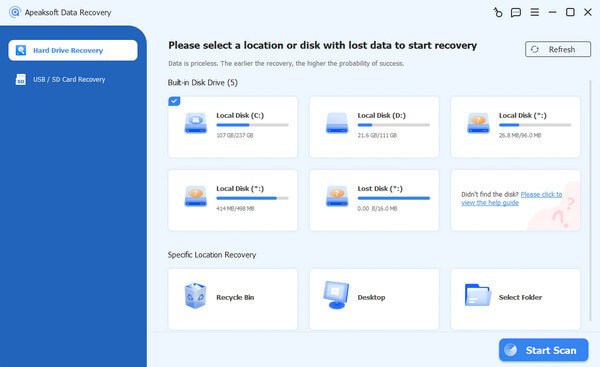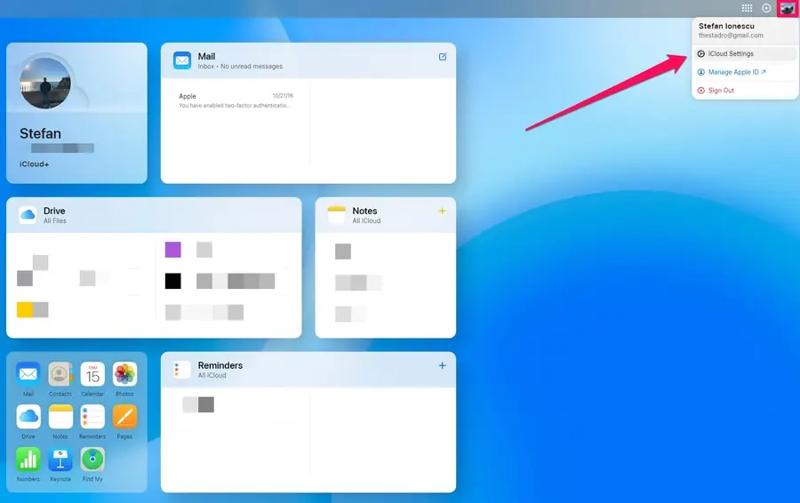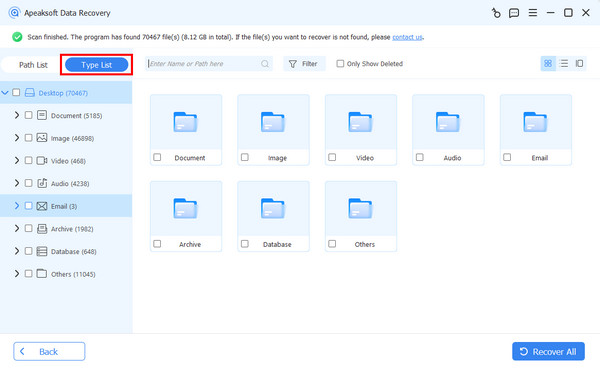RAID Drive Data Recovery Tutorials and Tips [2025]
RAID (Redundant Array of Independent Disks) is a special risk that connects two or more disks to prevent data loss and increase the transfer speed if every disk works well. However, RAID arrays are prone to fail because of the complex workflow.
In this guide, we'll cover RAID data recovery and provide specialized software and recovery services. By understanding these aspects, you'll be better equipped to protect your data and recover it when needed.
PAGE CONTENT:
Part 1. Recover RAID Drive Data Easily with Pro Software
Professional RAID recovery software is internally designed to handle the complexity of RAID configurations so that it can find the lost data. No matter whether the RAID is RAID 0, RAID 1, RAID 5, or any other level, it can adjust them and employ different scan algorithms. This is what Apeaksoft Data Recovery does.
Secure Download
Secure Download
It helps personal users or enterprises to fix and rebuild RAID arrays and recover lost data from RAID hard drives, even after formatting. It also specializes in recovering damaged hard drives. Moreover, this program is compatible with Windows and Mac computers, and the latest macOS 26. Let's see how to recover RAID with it.
Step 1. Download and install this program, then click Hard Drive Recovery on the left sidebar. Insert your drive and select it. Click Start Scan.

Step 2. This program will begin scanning for any lost data from your RAID drive. It also tries to fix and rebuild the RAID array, so that more lost data can be recovered.

Step 3. When the scanning finishes, you can use the filter and search features, which help you find the desired lost data quickly. Select all the data you want to recover and click Recover All at the bottom.

Step 4. A window will pop up and ask you to save all data to a path. Just be aware that don't save data back to the corrupted drive.
Part 2. How to Contact a RAID Drive Recovery Service
How to select a reliable data recovery service
We first recommend trying a RAID data recovery software since it is easy to use and time-saving. If this method fails, then you have to contact a reliable RAID data recovery service. This is usually because your RAID drive has been severely physically damaged. Therefore, only the system aspect of recovery can't get data back.
Recommended RAID recovery service
If you now have no idea which service to choose, we also have a recommendation for you: Ontrack. This is an experienced data recovery company, providing various data recovery services, including RAID hard drive recovery. It even cooperates with Western Digital and provides Western Digital hard drive recovery special service for WD users.
Process to recover the RAID with a recovery service
Once you have chosen a service, the first thing is to contact them and provide the basic information, including: the RAID level, number of drives, and the type of failure you are experiencing (e.g., drive failure, controller failure, or corruption). They will evaluate and send you a quote.
Then, if you agree to the quote, they will recover the drive according to the plan you choose. Generally, you can ask to track the whole process, and your data and privacy will be well protected.
Part 3. Common Causes of RAID Failure
RAID failures can occur for various reasons, and understanding the common causes can help you take the proper measures and avoid further data loss. Some of the most frequent causes of RAID failure include:
• Physical Failures: The most common cause of RAID failure is a physical hard drive failure, like dropping into pieces inside. In 70% of these cases, you should contact a service.
• Controller Failures: RAID arrays rely on a RAID controller to manage data between the drives. A malfunctioning controller will make the drive inaccessible.
• Corrupted RAID Configuration: Since the RAID structure is more complex than a common hard drive, a RAID drive crashes more often as the usage time increases.
• Power Surges or Outages: Sudden power supply interruptions can cause RAID arrays to shut down improperly and, hence, lead to failure.
There are also many other reasons, like overheating, fires, etc. Learning about these causes and preventing any data loss risks.
Conclusion
RAID file recovery may be complex because of RAID's special structure. However, a reliable program and service help a lot. Please search for them instantly when you find data loss to increase the recovery success rate. Also, if you don't want to waste time evaluating, you can try Apeaksoft Data Recovery and the Ontrack RAID recovery service we recommend.
Related Articles
How to move contacts from Android to iPhone? It is hassle-free if you utilize the right method. Read this article and try four proven ways.
How to recover deleted contacts on iPhone? Come and explore 5 practical ways to retrieve deleted phone numbers on iPhone with ease!
TThis guide illustrates four effective ways to help you back up contacts on your iPhone to iCloud, Gmail, and your computer.
Do you want to sync Facebook contacts to your iPhone? Check 6 proven ways to sync contacts, pictures, etc., to iPhone 17/16/15/14/13, and more.

